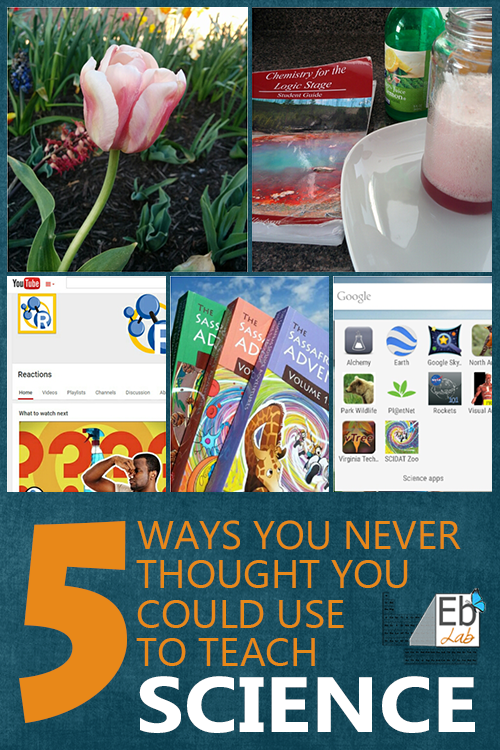 When you say the word science, half the population involuntarily shudders at the memory of cracking open their high school chemistry textbooks!
When you say the word science, half the population involuntarily shudders at the memory of cracking open their high school chemistry textbooks!
People often assume that to teach science effectively, we must have a boring, dry textbook, which is just not true.
I have already shared the three keys for teaching science, but today I wanted to share with you all 5 ways you may have never considered to use when teaching science! Things like my favorite apps and living books.
I trust that these ideas will help you add a bit of interest to your plans for science!
Let’s dig in!
5 Ways you never thought you could use to study science
These are in no particular order, so no one way is better than another.
#1 – Use scientific apps.
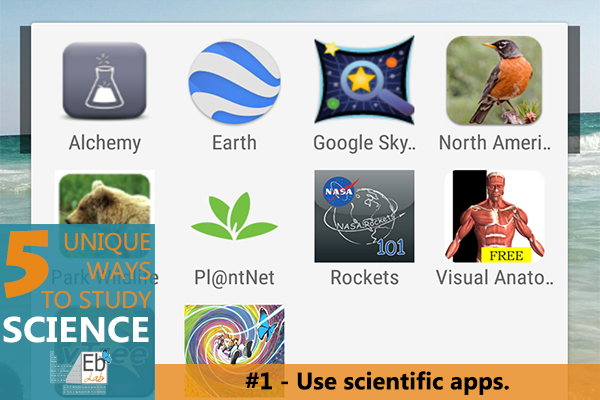
In this digital age, we have tons of information at our fingertips. Don’t know something? Google it!
And although many of us work to limit screen time, I like to make that screen time work for us. We download lots of scientific apps that our kids can use at any time. Here are a few of my favorites free ones:
- Google Earth
- Google Sky
- North American Birds
- VT Tree
- Rockets by NASA
- PlantNet
- Park Wildlife
- Alchemy
Of course, you can always download our Sassafras Science app for free too – even if you are not reading the novels!
#2 – Do experiments in your kitchen.
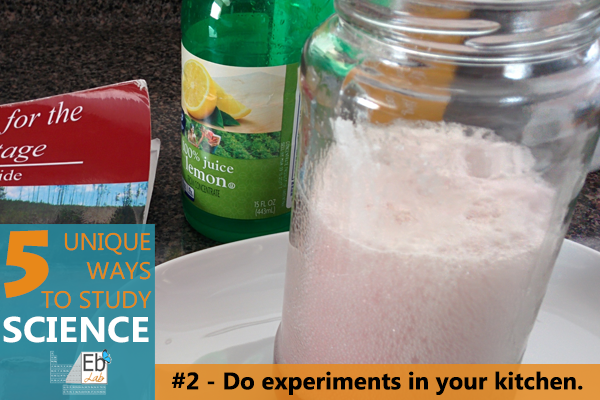
Did you know that you can use red cabbage to make an indicator?
Or that many of the products you use everyday to prepare your food can also double as acids and bases in your science experiments?
We regularly use items like baking soda, vinegar, sugar, salt, dish soap, and candy in our scientific tests!
Need more ideas? Liz Heinecke has a great blog packed with ideas for how you can turn your kitchen in a supply story for experiments!
#3 – Read lots of living books.
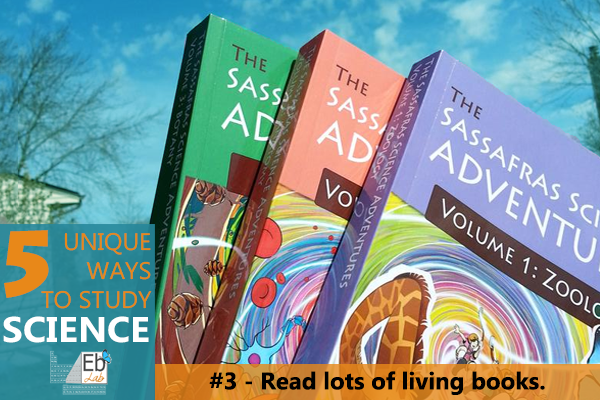
A great book with beautiful illustrations or adventure-packed story-lines can add a ton of excitement to your science studies. When you choose the right type of living book you kids will learn without even realizing it!
Here are a few of my favorite books to use:
- The Let’s Read and Find Out Series
- The Sassafras Science Adventures
- The Burgess Bird Book
For a more complete list, check out this list of living books for science.
#4 – Study science outdoors.
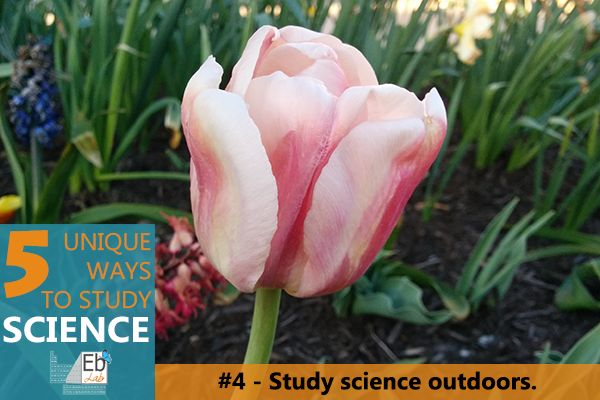
Heading outside to study nature helps to make science real and practical.
Many of the principles in science we hold as truth began with a scientist observing something in nature that made them want to dig a bit deeper.
Not only does nature study allow students to work on their observation skills, but it also awakens the scientific side of the brain in the same way a good book awakens the imagination!
#5 – Watch a few YouTube videos.

Again, technology can be your best friend, educationally speaking.
I often use YouTube videos to introduce a topic, show a principle in action, or to get a few laughs when teaching science. Here are two of my favorite go-to channels:
You can also watch live interviews with astronauts on the Reel NASA channel!
So there you have it!
Five unique ways you never thought you could use to study science. How about you – what unique ways to you teach science?
 Sign up below to receive weekly tips & tools for homeschool science and we'll send you a FREE copy of
Sign up below to receive weekly tips & tools for homeschool science and we'll send you a FREE copy of 